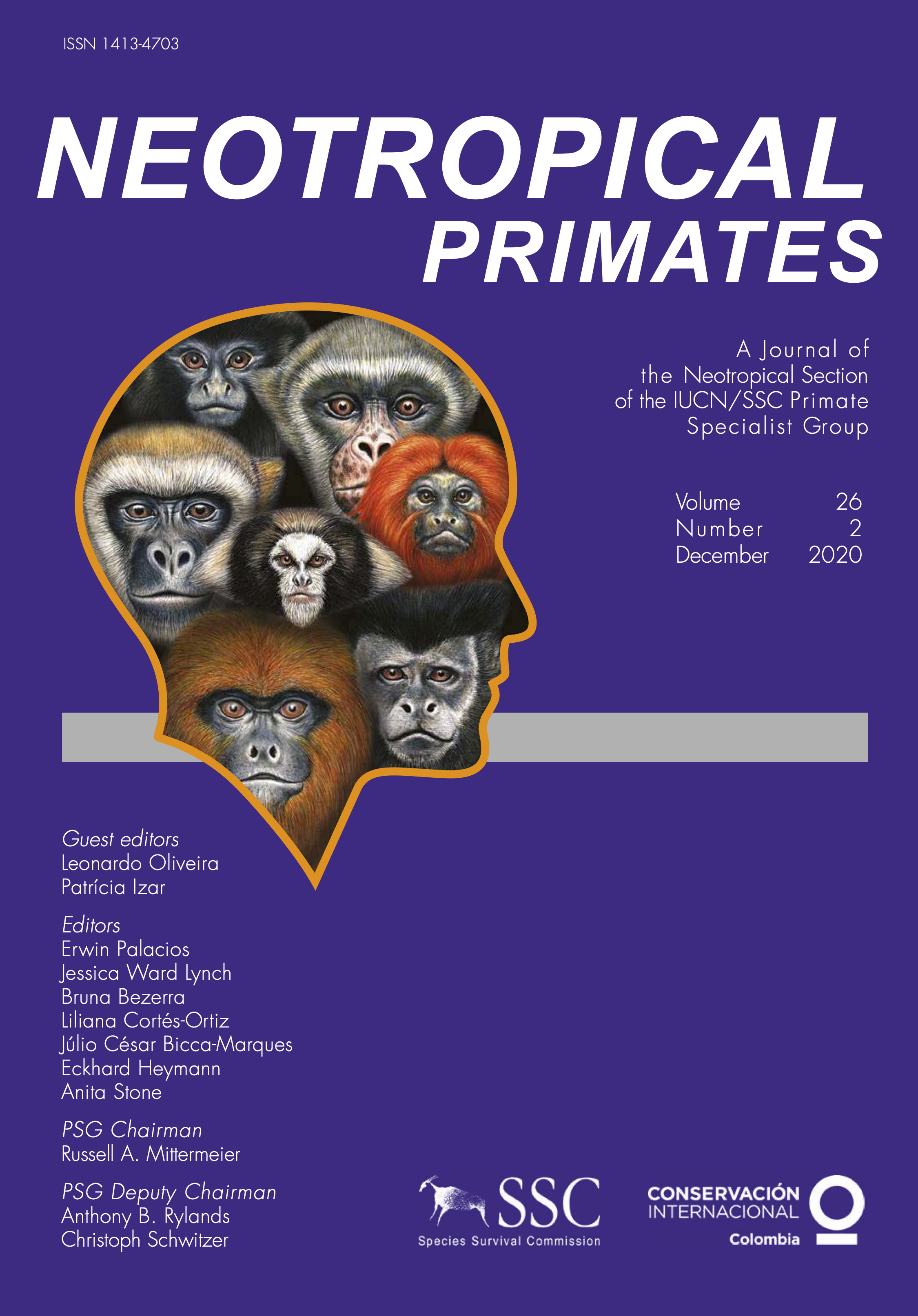Emissão de vocalizações sirena por infantes de macacos-prego (Sapajus libidinosus)
DOI:
https://doi.org/10.62015/np.2020.v26.45Keywords:
Vocal development, use development, encounter contextAbstract
The study of vocal development addresses both the production of vocalizations and their use and comprehension. In non-human primates, there is little evidence of vocal production learning whereas there is evidence of vocal usage learn- ing. Capuchin monkeys emit specific vocalizations called sirenas simultaneously with a display, when group members reunite after a period of separation. Prior studies suggest sirenas are typically emitted by adult males during reunions. Sirenas have not been reported for infants yet, despite infants being present when subgroups reunite. The aim of this study was to identify the age of onset and the context of emission of the first sirena calls in infant bearded capuchin monkeys (Sapajus libidinosus). Data were collected on five infant males and two infant females using the focal animal follow method, from birth to 11 months, and their vocalizations were recorded ad libitum. Five events with display were recorded in which the infants involved could be identified. In four of these events the infant emitted sirena and in one event the infant emitted trill. The youngest age observed for an infant to emit a sirena vocalization was at 6 months old. The events were started by infants and directed to the alpha male. In all events, the alpha male emitted vocalizations other than sirena, which suggests that he does not perceive the event as a reunion. Our observations show that sirena calls appear early in the S. libidinosus vocal repertoire but their adequate usage may depend on experience to learn the association between the correct context and the call.

Downloads
Published
Issue
Section
License
Copyright (c) 2020 Luíza Gonzalez Ferreira, Patrícia

This work is licensed under a Creative Commons Attribution-NonCommercial-ShareAlike 4.0 International License.


